Geomagnetic activity, sunspot region 2209
Sunday, 16 November 2014 13:52 UTC
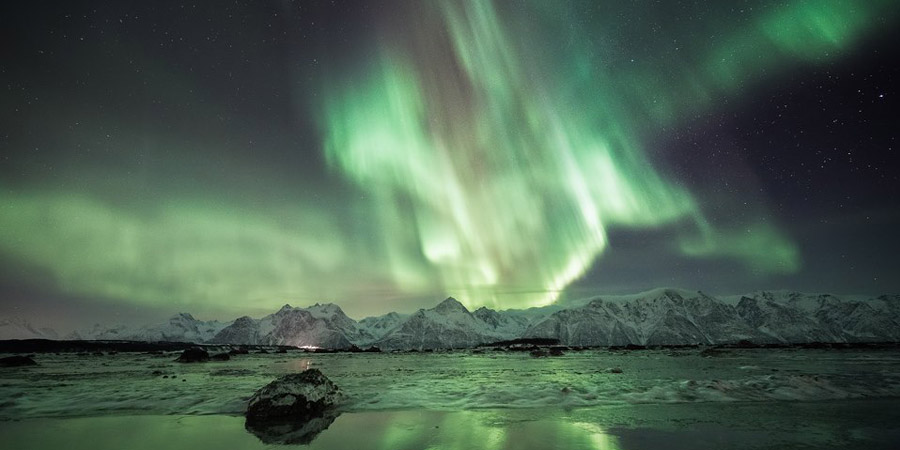
Earth is currently under the influence of a moderately powerful coronal hole high speed stream. Auroral displays are being reported from many high latitude locations including Norway, where this image was taken yesterday evening by Art by T.Richardsen. We will likely continue to see auroral displays like this at high latitudes as coronal hole effects are set to persist for at least the coming 3 days. Back on our nearest star we see that solar activity remains at moderate levels thanks to sunspot region 2209. How did it evolve over the past 24 hours and what can we expect from it? Read this article to find out.
Geomagnetic activity
Earth is currently under the influence of a moderately powerful coronal hole high speed stream. The solar wind speed is around 600km/s and the direction of the IMF is mostly southward. The Kp-index has been ranging between three and four (unsettled to active geomagnetic conditions) over the past few hours and auroral reports are coming in from many high latitude locations like Scandinavia, the northern United States and New Zealand! This fine image below was captured by PRO Focus - Photography by Chris Watson showing some faint but lovely purple rays as seen from New Zealand.
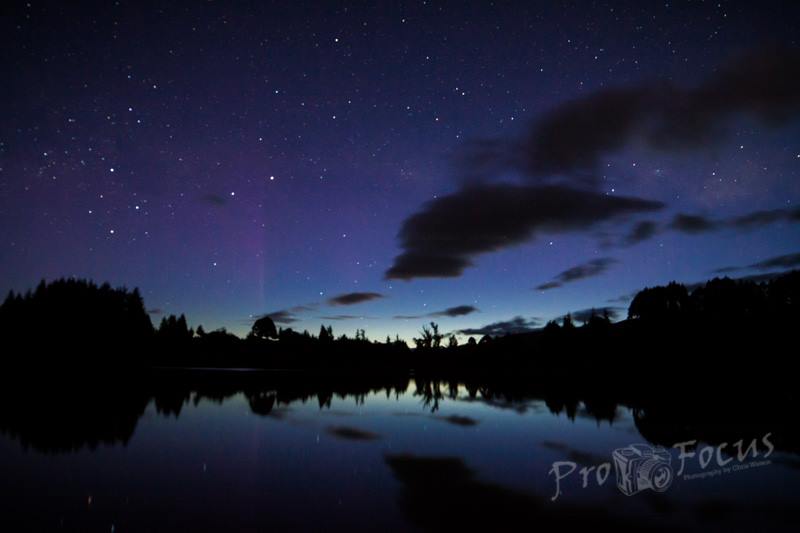
Here is another shot also captured this past night by Snotty Moose Studio from Minnesota, USA. Stunning!
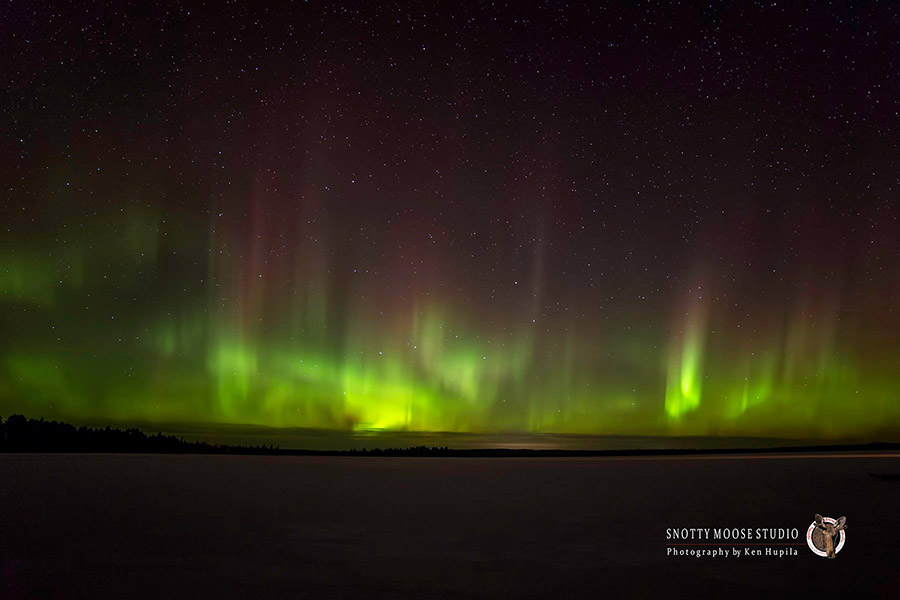
We will likely continue to see coronal hole high speed stream effects for the coming three days. The Kp-index will likely remain elevated as well and we can not rule out an isolated period of minor G1 geomagnetic storming conditions as long as these coronal hole high speed streams continue to influence Earth.
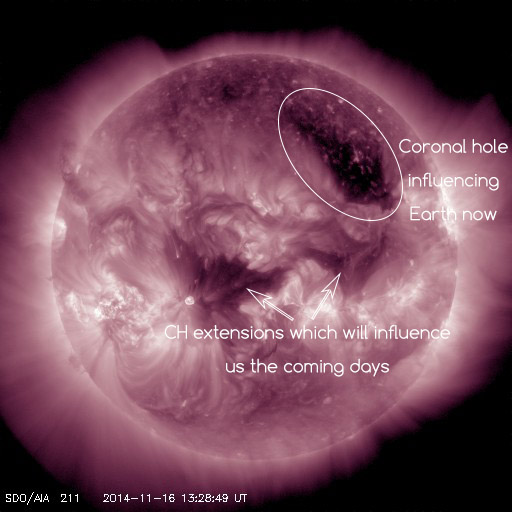
Sunspot region 2209
Solar activity continues at moderate levels thanks to sunspot region 2209 (old sunspot region 2192) which produced two impulsive M-class solar flares yesterday: M3.3 and M3.7. Both of the M-class solar flares that occured yesterday produced coronal mass ejections but they were faint, slow and of course not directed towards Earth. It will still take about 3 days before it has rotated into a good earth-facing position.
If we compare sunspot region 2209 with how it looks now and how it looked 24 hours ago we can conclude that it didn't change that much. It still has two delta sunspot in the trailing sunspot cluster and gained a couple of small spots north of the leader spot. There were not any obvious signs of decay which is of course excellent news. The chance for another M-class (R1-R2) event remains but X-class solar flares (R3 or greater) are not likely.
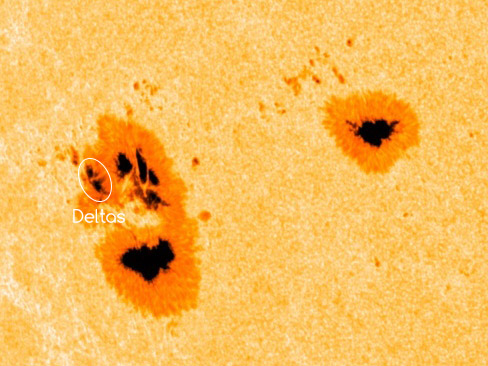
M-class flare probability for the coming 24 hours: 35% chance
X-class flare probability for the coming 24 hours: 5% chance
All the other sunspot regions on the disk are unremarkable and unlikely to produce strong solar flares. Any future solar flares will very likely be centered around sunspot region 2209.
Images: Art by T.Richardsen, PRO Focus - Photography by Chris Watson, Snotty Moose Studio and NASA SDO.
Thank you for reading this article! Did you have any trouble with the technical terms used in this article? Our help section is the place to be where you can find in-depth articles, a FAQ and a list with common abbreviations. Still puzzled? Just post on our forum where we will help you the best we can!
Latest news
Latest forum messages
Support SpaceWeatherLive.com!
A lot of people come to SpaceWeatherLive to follow the Sun's activity or if there is aurora to be seen, but with more traffic comes higher server costs. Consider a donation if you enjoy SpaceWeatherLive so we can keep the website online!

Space weather facts
| Last X-flare | 2024/03/28 | X1.1 |
| Last M-flare | 2024/04/19 | M1.0 |
| Last geomagnetic storm | 2024/04/16 | Kp5 (G1) |
| Spotless days | |
|---|---|
| Last spotless day | 2022/06/08 |
| Monthly mean Sunspot Number | |
|---|---|
| March 2024 | 104.9 -19.8 |


